arts包含如下:1,装饰器 ;2,组件的描述(build函数);3,自定义组件(@Component修饰的),是可复用的单元;4,系统的组件(鸿蒙官方提供);等
装饰器的作用:装饰类、变量、方法、结构等。
@State 可以用数据驱动UI更新。
@Entry 入口文件
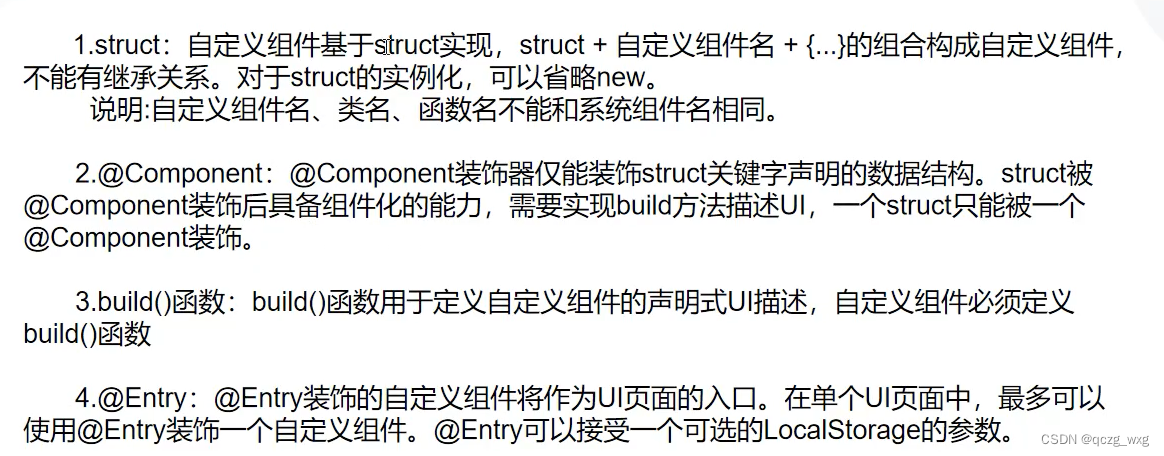

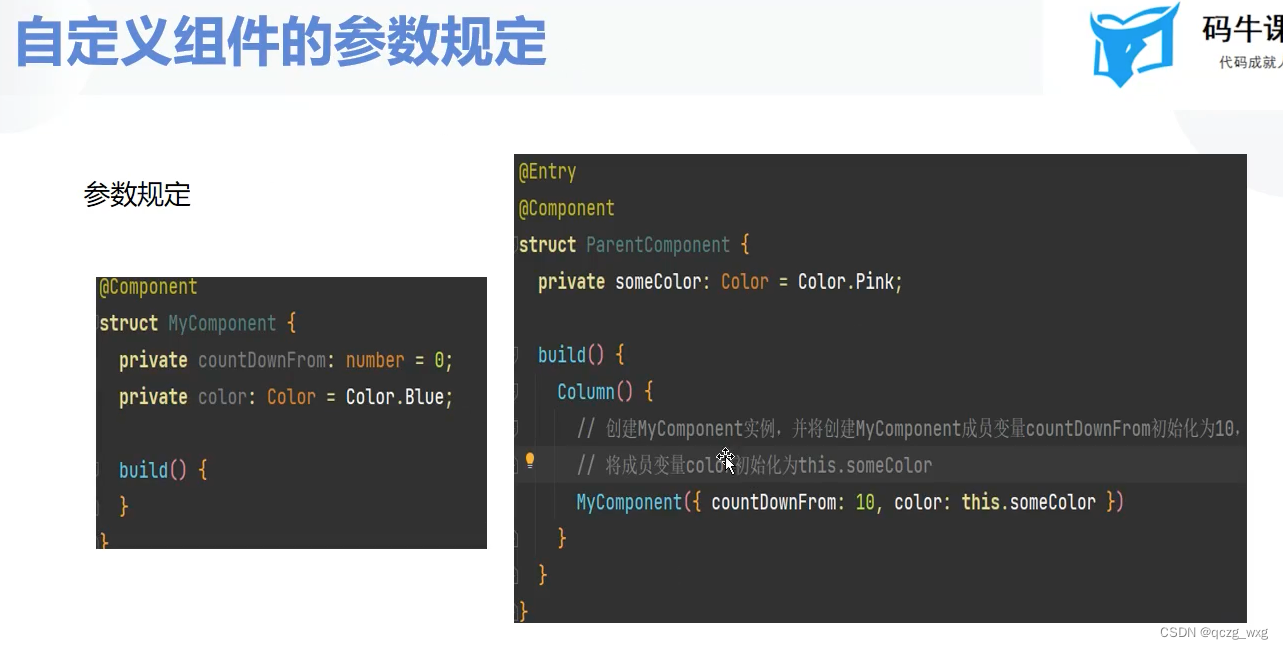
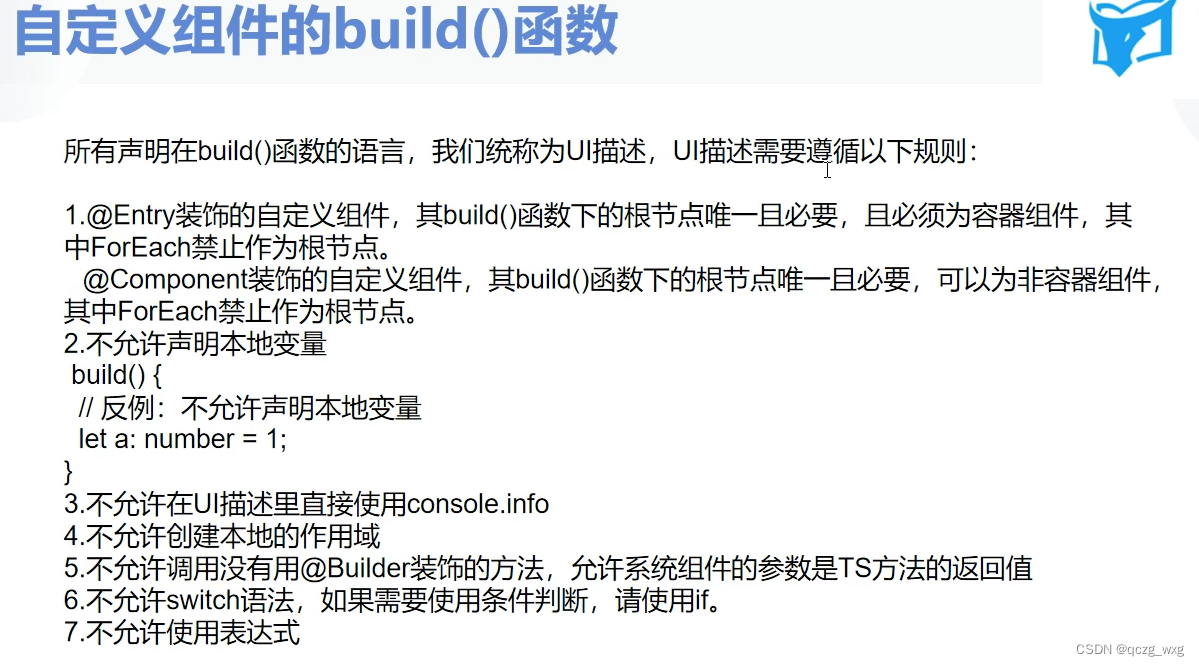
组件的调用
@Entry
@Component
@Preview
struct Index {
@State message: string = 'Hello World'
aboutToAppear() {
}
build() {
Column() {
//可以不传参
Test()
//也可以传参,使用{}
Test({msg:'马超'})
}.width('100%').height('100%').justifyContent(FlexAlign.Center)
}
aboutToDisappear() {
}
}
//自定义组件
@Component
struct Test{
private msg:string = '赵云';
build(){
Column(){
Text(this.msg)
}
}
}
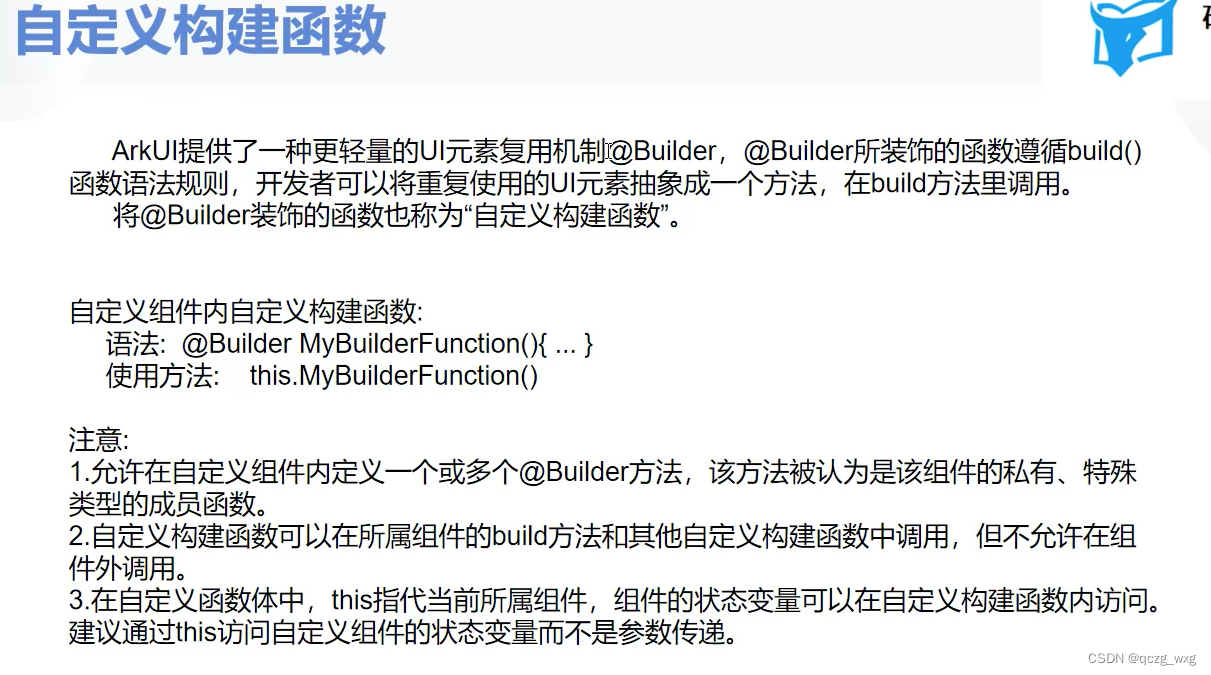
@Entry
@Component
@Preview
struct Index {
@State message: string = 'Hello World'
msg:string = '曹操'
aboutToAppear() {
}
build() {
Column() {
//调用的时候需要使用this.this指代当前所属组件
//注意,这里传递的是值不是引用。如果在Button的点击方法中更改了
//this.msg的值,MyBuilderFunction1不会修改显示内容
this.MyBuilderFunction1(this.msg)
this.MyBuilderFunction2()
this.MyBuilderFunction3()
//调用全局构建函数,不能使用this
GlobalBuilder()
Button('按钮').onClick((event:ClickEvent)=>{
console.log("点击了按钮")
this.msg = '曹丕'})
}.width('100%').height('100%').justifyContent(FlexAlign.Center)
}
aboutToDisappear() {
}
@Builder //自定义组件内构建函数
MyBuilderFunction0() {
Text(this.message).fontSize(50)
}
@Builder //自定义组件内构建函数
MyBuilderFunction1(msg:string) {
Text(msg).fontSize(50)
}
@Builder //自定义组件内构建函数
MyBuilderFunction2() {
Text('刘备').fontSize(50)
}
@Builder //自定义组件内构建函数
MyBuilderFunction3() {
Text('孙坚').fontSize(50)
}
}
//全局构建函数,需要使用function
@Builder
function GlobalBuilder(){
Text('我是全局的构建函数').fontSize(40)
}
@Entry
@Component
@Preview
struct Index {
@State message: string = 'Hello World'
msg:string = '曹操'
aboutToAppear() {
}
build() {
Column() {
//MyBuilderFunction后这里不能用括号
Child({builder:this.MyBuilderFunction})
}.width('100%').height('100%').justifyContent(FlexAlign.Center)
}
aboutToDisappear() {
}
@Builder
MyBuilderFunction(){
Text('我爱你爱你').fontSize(50)
}
}
//子组件被父组件调用,
@Component
struct Child{
//不初始化会报错
//Property 'builder' in the custom component 'Child' is missing assignment or initialization.
// @BuilderParam装饰器:引用@Builder函数
// 当开发者创建了自定义组件,并想对该组件添加特定功能时,例如在自定义组件中添加一个点击跳转操作。
// 若直接在组件内嵌入事件方法,将会导致所有引入该自定义组件的地方均增加了该功能。
// 为解决此问题,ArkUI引入了@BuilderParam装饰器,@BuilderParam用来装饰指向@Builder方法的变量,
// 开发者可在初始化自定义组件时对此属性进行赋值,为自定义组件增加特定的功能。该装饰器用于声明任意UI描述的一个元素,
// 类似slot占位符。
@BuilderParam builder:()=>void;
build(){
Column(){
this.builder()
Text('吕玲绮').fontSize(50)
}
}
}
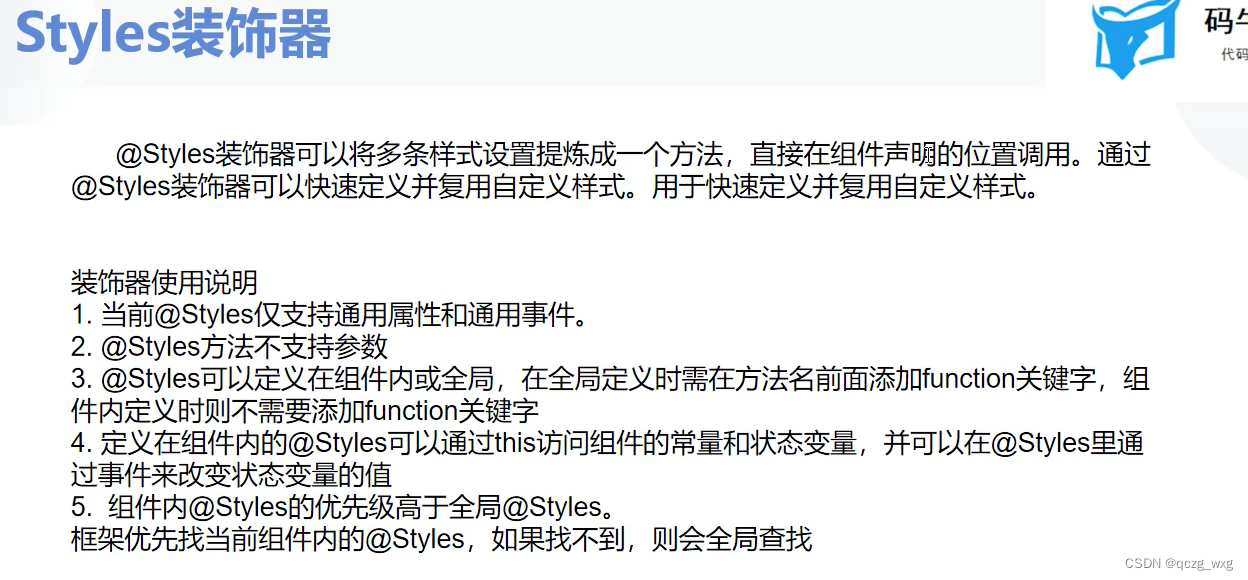
@Entry
@Component
@Preview
struct Index {
@State message: string = 'Hello World'
msg: string = '曹操'
aboutToAppear() {
}
build() {
Column() {
//如果名字相同,都叫MyStyle,组件内的优先级高
//@Styles不能传递参数
Text('曹操').MyStyle1()
Text('刘备').MyStyle2()
Text('孙权').MyStyle1()
Text('吕布').MyStyle2()
}.justifyContent(FlexAlign.Center).height('100%').width('100%')
}
//自定义样式,组件内不需要function,只能是通用属性和事件,
@Styles
MyStyle1(){
.width('100%')
.height(100)
.backgroundColor('green')
}
}
//自定义样式,组件外需要function,只能是通用样式,不能传递参数
@Styles
function MyStyle2(){
.width('100%')
.height(100)
.backgroundColor('blue')
}
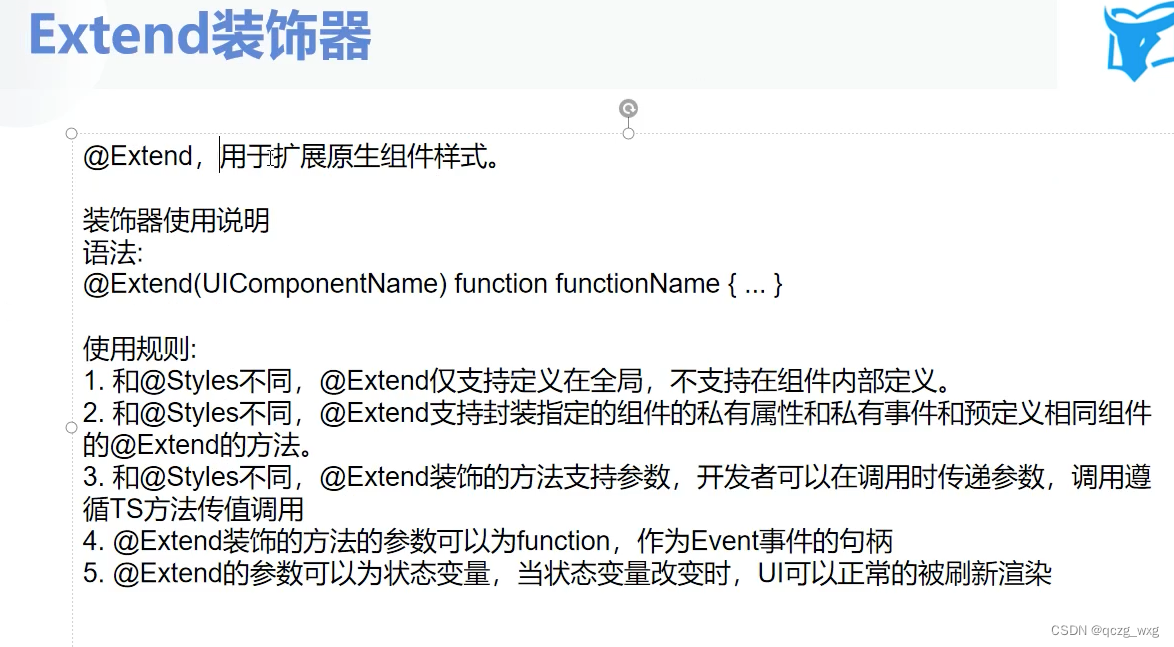
@Entry
@Component
@Preview
struct Index {
@State message: string = 'Hello World'
aboutToAppear() {
}
build() {
Column({ space: 20 }) {
Text('曹操').MyTextStyle(Color.White)
Text('孙坚').MyTextStyle(Color.Blue)
Text('刘备').MyTextStyle(Color.Green)
Text('吕布').MyTextStyle()
}.justifyContent(FlexAlign.Center).height('100%').width('100%')
}
}
//扩展原生样式,可以用私有的,可以传递参数,参数可以设置默认值,有默认值的写在最后面
@Extend(Text) function MyTextStyle(color:Color = Color.Orange) {
.fontSize(50)
.fontColor(color)
.backgroundColor(Color.Gray)
}

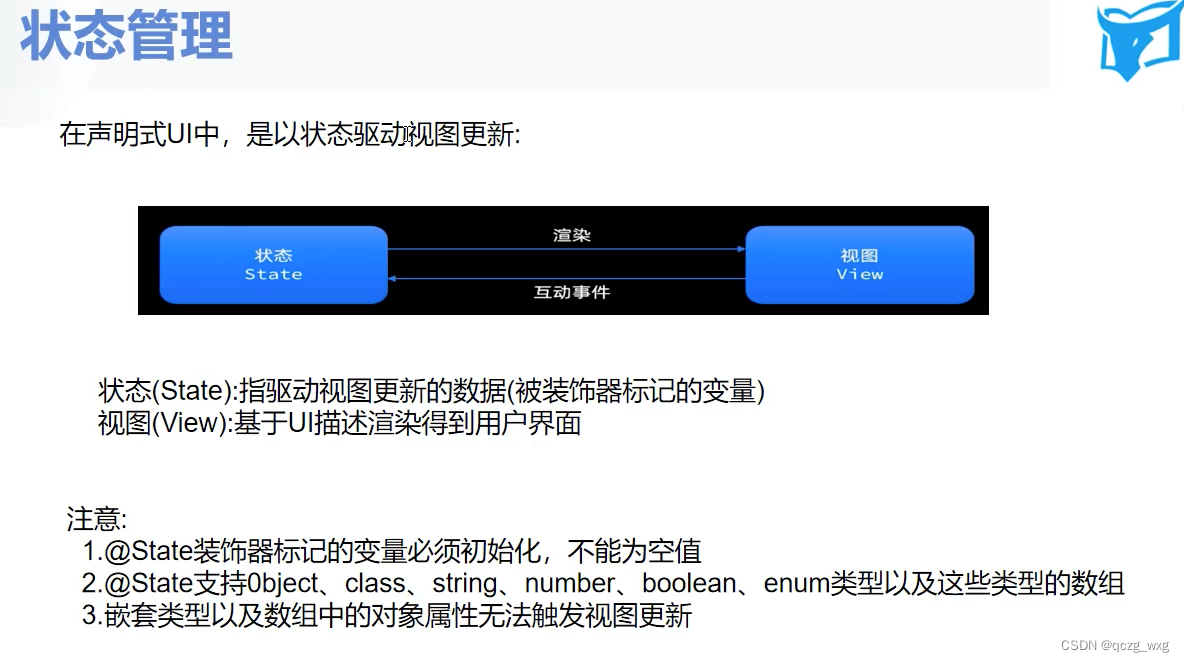
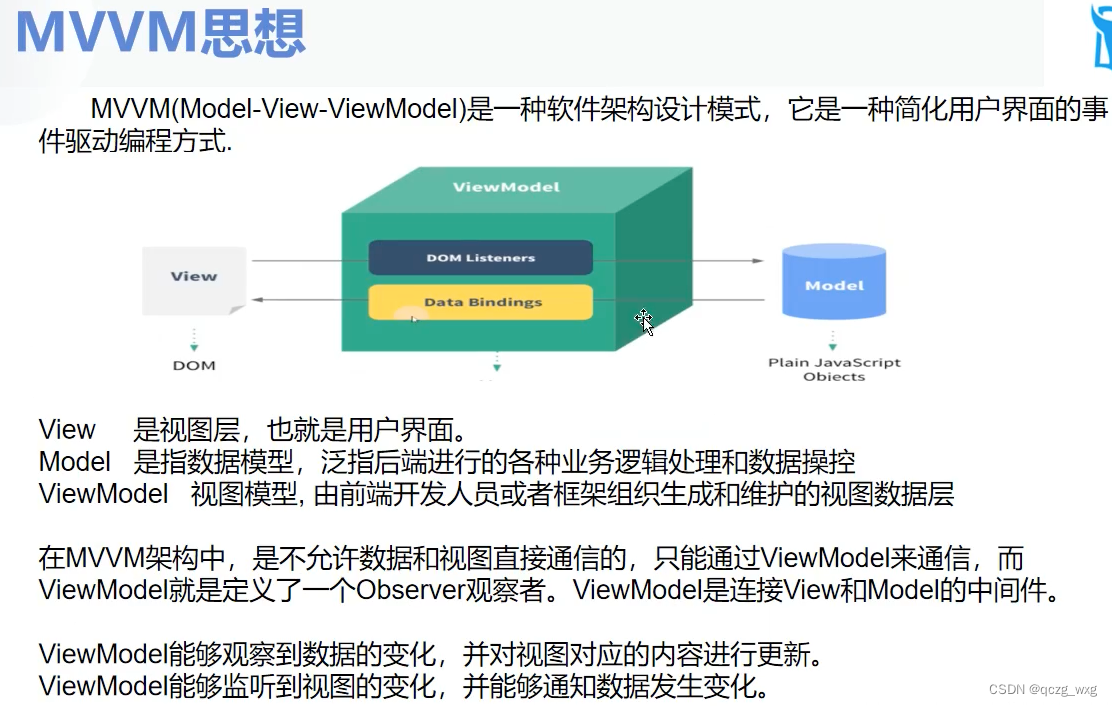
@Entry
@Component
@Preview
struct Index {
//定义状态变量
@State count: number = 0
build() {
Column({ space: 20 }) {
Text(`count =${this.count}`).fontSize(50)
Button('点击加一').onClick(()=>{this.count++})
}.justifyContent(FlexAlign.Center).height('100%').width('100%')
}
}
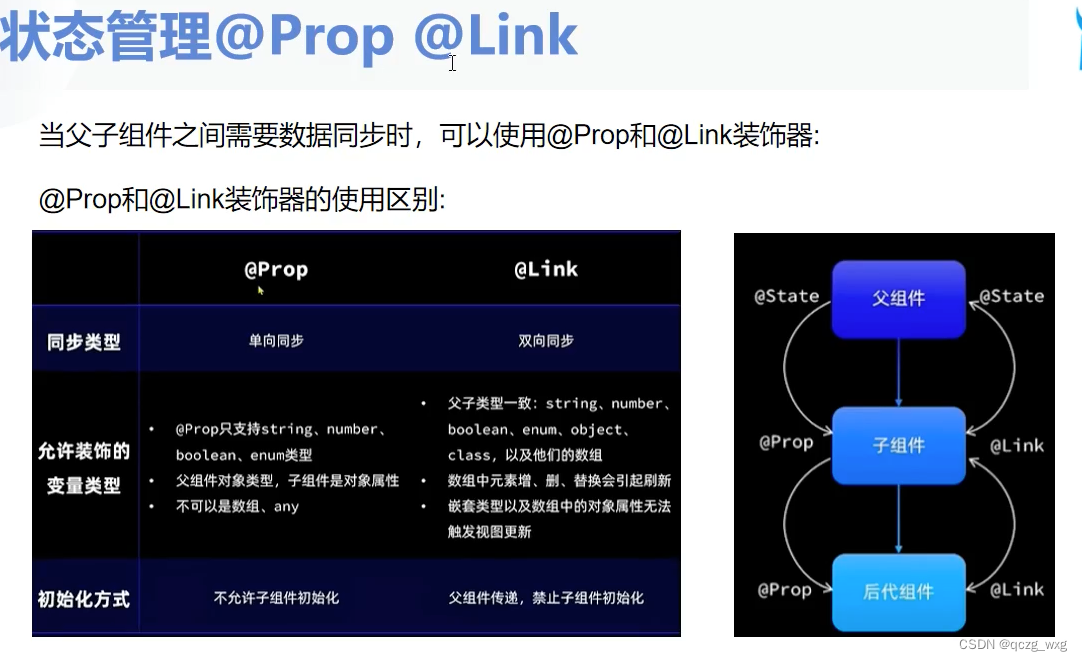
@Entry
@Component
@Preview
struct Index {
//定义状态变量
@State count: number = 0
build() {
Column({ space: 20 }) {
Text(`父组件的count${this.count}`).fontSize(40)
Button('父点击加一').onClick(() => {
this.count++
})
Child({ childCount: this.count })
}.justifyContent(FlexAlign.Center).height('100%').width('100%')
}
}
@Component
struct Child {
//把count传递给子组件Child,使用@Prop修饰
@Prop private childCount: number
build() {
Column() {
Text(`子组件的count${this.childCount}`).fontSize(40)
//prop是单向同步,这里点击加一变得只有child组件,父组件不变
Button('子点击加一').onClick(() => {
this.childCount++
})
}
}
}
@Entry
@Component
@Preview
struct Index {
//定义状态变量
@State count: number = 0
build() {
Column({ space: 20 }) {
Text(`父组件的count${this.count}`).fontSize(40)
Button('父点击加一').onClick(() => {
this.count++
})
//@Link修饰的变量必须要加$
Child({ childCount:$count})
}.justifyContent(FlexAlign.Center).height('100%').width('100%')
}
}
@Component
struct Child {
//把count传递给子组件Child,使用@Prop修饰
@Link private childCount: number
build() {
Column() {
Text(`子组件的count${this.childCount}`).fontSize(40)
//link是单向同步,这里点击加一变得父组件与子组件都会变
Button('子点击加一').onClick(() => {
this.childCount++
})
}
}
}
@prop不能是数组、对象,但支持枚举类型,不允许初始化
@link支持类型比较多,详见上图
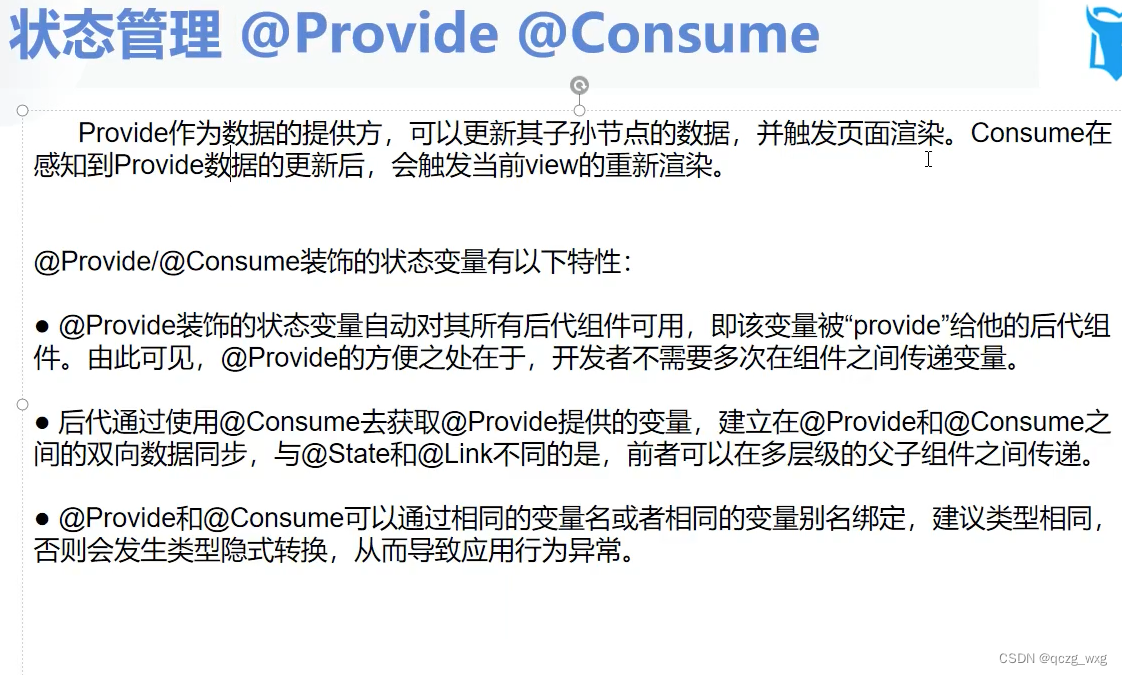
@Provider 和@Consume是生产者和消费者模式
@Entry
@Component
@Preview
struct Index {
//定义状态变量
@Provide count: number = 0
build() {
Column({ space: 20 }) {
Text(`父组件的count ${this.count}`).fontSize(40)
Button('父点击加一').onClick(() => {
this.count++
})
//不需要传递参数了
Child()
}.justifyContent(FlexAlign.Center).height('100%').width('100%')
}
}
@Component
struct Child {
@Consume count: number
build() {
Column() {
Text(`子组件${this.count}`).fontSize(40)
GrandSon()
}
}
}
@Component
struct GrandSon {
@Consume count: number
build() {
Column() {
Text(`孙组件${this.count}`).fontSize(40)
Button('孙点击加一').onClick(() => {
//孙组件点击改变count,父组件,子组件也会改变
this.count++
})
}
}
}
